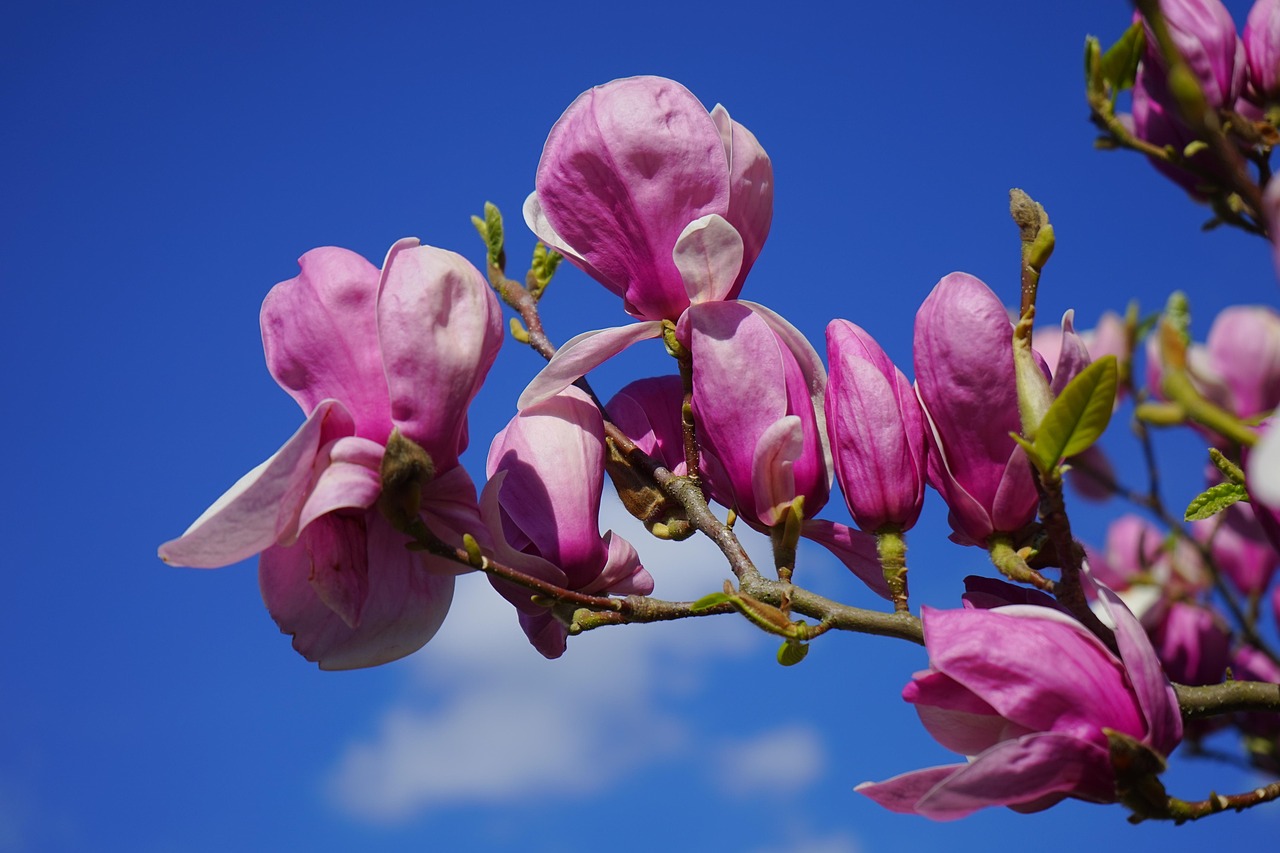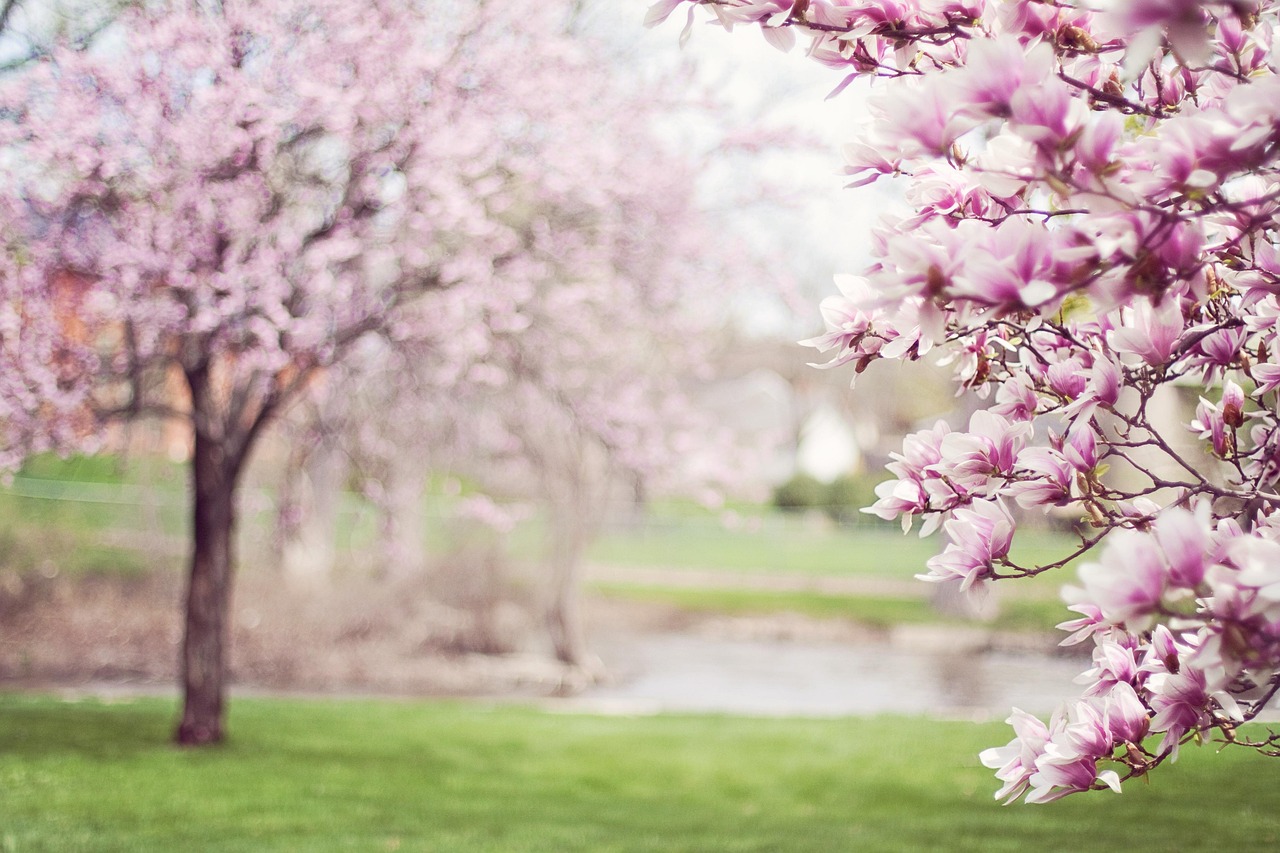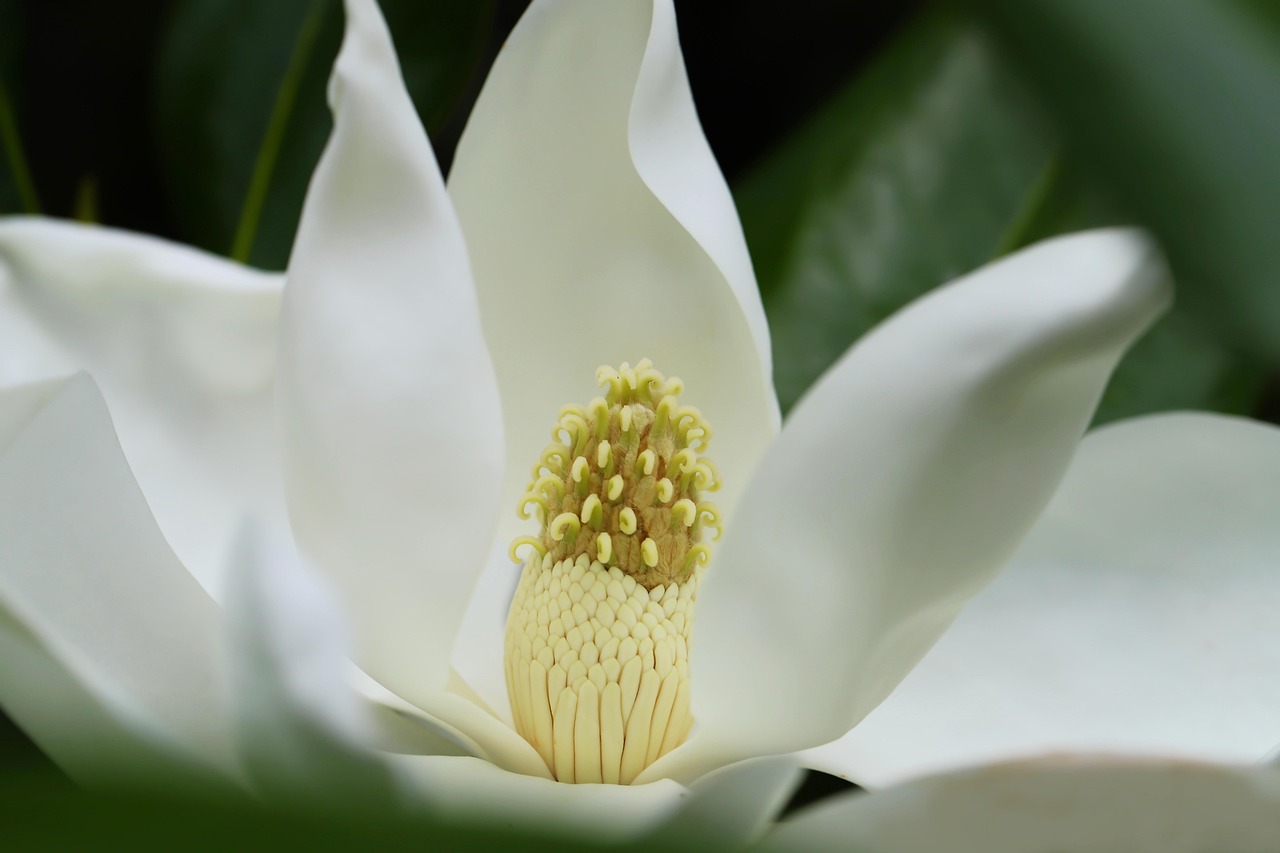Magnolia trees are not considered highly deer resistant. While deer may avoid them due to their thick foliage and strong fragrance, they can still browse on magnolia leaves and buds, especially in times of food scarcity.
Understanding Deer Resistance in Plants

Deer resistance refers to a plant’s ability to withstand browsing by deer. Many factors contribute to whether a plant is attractive to deer. These include the plant’s taste, texture, and availability of alternative food sources. In some cases, environmental conditions can influence deer behavior as well.
Magnolia trees, with their large, fragrant flowers and broad leaves, are often admired for their beauty in gardens. However, their susceptibility to deer can be a concern for gardeners looking to protect their landscapes. Understanding the characteristics of magnolia trees and the behavior of deer is essential for effective garden planning.
Characteristics of Magnolia Trees
Magnolia trees belong to the Magnoliaceae family and are known for their stunning blooms and wide variety of species. Here are some key characteristics that define these trees:
- Types: There are both evergreen and deciduous magnolias, each offering unique aesthetic appeal.
- Flowers: The flowers can be large and fragrant, attracting pollinators like bees and butterflies.
- Leaves: Leaves are typically thick and leathery, which may deter some browsing.
- Growth Habit: Magnolias can grow as large trees or shrubs, making them versatile for different garden designs.
Why Do Deer Browse on Certain Plants?
Deer are herbivores that primarily feed on a variety of plants. Their feeding habits can be influenced by several factors:
- Availability: If preferred food sources are scarce, deer will turn to less desirable options.
- Taste and Texture: Deer tend to avoid plants with strong scents or bitter tastes.
- Seasonal Behavior: During spring and summer, deer may be more inclined to browse on young leaves and buds.
Factors Influencing Deer Behavior
The behavior of deer can change based on a variety of factors, including their environment and the time of year. For example, during winter months when food is limited, deer may venture into gardens more frequently in search of sustenance. This is important to consider when planting magnolias or any other ornamental plants.
Understanding what attracts deer can help gardeners take preventive measures. Some common factors include:
- Nearby Cover: If there is cover nearby, such as woods or dense brush, deer may feel safe venturing into gardens.
- Food Sources: Gardens near agricultural areas may attract deer looking for additional food options.
- Fencing: Physical barriers can help deter deer from entering garden spaces.
Strategies for Protecting Magnolia Trees
If you decide to plant magnolia trees despite their potential vulnerability to deer, consider implementing protective strategies. Here are some effective methods:
- Fencing: Installing a fence around your garden can provide a physical barrier against deer. Ensure it’s tall enough (at least 8 feet) to prevent jumping.
- Repellents: Use deer repellents that contain strong scents or tastes that deter deer from approaching.
Caution is needed when using chemical repellents; always follow product instructions. - Companion Planting: Surround magnolias with plants that deer dislike. This can help create a natural barrier.
- Motion-Activated Devices: Devices that make noise or emit light can scare deer away from your garden.
The Role of Magnolia Trees in the Garden
Despite their susceptibility to deer, magnolia trees play a significant role in many gardens. Their stunning flowers and lush foliage can enhance the beauty of any landscape. In addition to aesthetics, magnolias also provide important ecological benefits:
- Wildlife Habitat: They offer shelter and food for various birds and insects.
- Erosion Control: Their root systems help stabilize soil and prevent erosion.
- Aesthetic Value: Magnolias serve as focal points in gardens, attracting attention during blooming seasons.
By understanding the potential challenges posed by deer and implementing protective measures, gardeners can enjoy the beauty of magnolia trees while minimizing damage from browsing. The key is to strike a balance between cultivating these magnificent trees and safeguarding them from hungry wildlife.
Choosing the Right Magnolia Varieties
When selecting magnolia trees for your garden, it’s essential to consider the different species and varieties available. Each type has unique characteristics that may influence their attractiveness to deer and their suitability for your landscape. Some magnolias may be more resistant to deer browsing than others.
Popular Magnolia Varieties
Here are a few popular varieties of magnolia trees, each with its distinct features:
- Southern Magnolia (Magnolia grandiflora): Known for its large, fragrant white flowers and dark green leaves, this evergreen species can grow quite tall. Its thick foliage may deter some deer.
- Star Magnolia (Magnolia stellata): This smaller tree produces star-shaped white flowers in early spring. Being a smaller variety, it may be more susceptible to deer but offers stunning blooms.
- Saucer Magnolia (Magnolia x soulangeana): A hybrid known for its large, colorful flowers that appear before the leaves. While beautiful, its tender buds can attract deer.
- Cucumber Tree (Magnolia acuminata): This species has unique cucumber-like fruit and is less commonly browsed by deer due to its height and stature.
Factors to Consider When Choosing a Variety
When selecting magnolia trees for your garden, consider the following factors:
- Climate: Different magnolia species thrive in various climates. Choose a variety that suits your local environment.
- Size: Consider how much space you have available in your garden. Some magnolias can grow quite large and may overwhelm smaller spaces.
- Soil Type: Magnolias prefer well-drained soil. Testing your soil type can help you select the best variety.
- Aesthetic Preference: Think about the appearance of the tree. Flower color, leaf shape, and overall size should match your garden design.
Planting and Care for Magnolia Trees
Proper planting and care are crucial for the health of magnolia trees. Healthy trees are generally less attractive to deer. Here are some tips for successful planting and maintenance:
Planting Tips
- Select the Right Location: Choose a spot with full sun to partial shade. Magnolias thrive with at least six hours of sunlight each day.
- Prepare the Soil: Ensure the planting area has well-draining soil. If necessary, amend the soil with organic matter to improve drainage.
- Dig a Proper Hole: The hole should be twice as wide but no deeper than the root ball. This encourages roots to spread out.
- Water Thoroughly: After planting, water the tree deeply to help establish roots. Regular watering is necessary during the first year.
Ongoing Care and Maintenance
After planting, maintaining your magnolia trees will help them flourish and potentially deter deer. Consider the following care practices:
- Mulching: Apply a layer of mulch around the base of the tree. This retains moisture and suppresses weeds, while also creating a barrier that may deter deer from browsing.
- Pruning: Regular pruning helps maintain shape and encourages healthy growth. Remove any dead or damaged branches as needed.
- Pest Control: Monitor for pests and diseases that can weaken your magnolia. Healthy trees are less appealing to deer.
- Fertilization: Use a balanced fertilizer during the growing season to provide necessary nutrients for healthy foliage and blooms.
Creating a Deer-Resistant Landscape
Your overall landscape design can enhance the effectiveness of protecting magnolia trees from deer. By implementing a deer-resistant approach in your garden, you can create an environment that minimizes browsing damage.
Complementary Plant Selection
Selecting plants that are less appealing to deer can help protect your magnolia trees. Here are some examples of deer-resistant plants:
- Lavender: Its strong scent deters deer while adding beauty and fragrance to your garden.
- Sage: Another aromatic herb that is typically avoided by deer.
- Barberry: This thorny shrub can act as a natural deterrent against deer while providing structure to your garden.
- Daylilies: These hardy perennials are generally overlooked by deer but provide vibrant blooms in summer.
Designing Focal Points in Your Garden
Certain design strategies can also help create barriers against deer:
- Create Layers: Incorporate a variety of plant heights. Taller plants can provide cover while shorter plants may deter deer.
- Add Hardscaping Elements: Incorporate rocks, gravel paths, or fences to create physical obstacles for deer.
- Use Ornamental Grasses: These can create natural barriers while adding movement and texture to your landscape design.
By thoughtfully selecting magnolia varieties, employing proper care techniques, and designing a deer-resistant landscape, gardeners can enjoy the beauty of magnolias while minimizing risks associated with deer browsing.

Understanding Deer Behavior and Their Impact on Gardens

To effectively protect magnolia trees and other garden plants, it is crucial to understand deer behavior. Deer are opportunistic feeders, and their browsing habits can significantly impact the health of your garden. By learning more about their preferences and habits, you can devise effective strategies to minimize damage.
Feeding Patterns of Deer
Deer typically have specific feeding patterns that can change based on the season, weather, and availability of food sources. Understanding these patterns can help gardeners anticipate when deer may be most active in their gardens.
- Seasonal Changes: During spring and summer, deer prefer tender new growth, including leaves, buds, and flowers. In fall and winter, they may resort to browsing on tougher materials as other food sources become scarce.
- Time of Day: Deer are crepuscular animals, meaning they are most active during dawn and dusk. This is often when they venture into gardens to feed.
- Social Behavior: Deer often feed in groups. If one deer discovers a food source, others may follow, increasing the potential for damage in your garden.
Identifying Deer Damage
Recognizing the signs of deer damage early can help you take action before significant harm occurs. Here are common indicators that deer have been browsing in your garden:
- Bite Marks: Look for clean-cut edges on leaves and stems. Deer tend to leave smooth, rounded bite marks.
- Browsed Plants: Observing missing leaves or buds on your magnolias or other plants is a clear sign of deer activity.
- Tracks: Deer tracks are typically cloven and about 2-3 inches in length. Finding tracks near your garden can indicate their presence.
- Feces: Deer droppings are small, pellet-like shapes that can be found near plants they frequent.
Implementing Effective Deterrents
Once you understand deer behavior and the signs of their activity, you can employ various deterrents to protect your magnolia trees and other plants. Here are some strategies that have proven effective:
Natural Deterrents
Certain natural substances can discourage deer from approaching your garden:
- Strong Scents: Scents like garlic, pepper, and vinegar can repel deer. Spraying a mixture of these substances around your magnolia trees may help deter them.
- Human Hair: Many gardeners have found success using human hair as a repellent. Placing hair clippings around the garden can create a scent that annoys deer.
- Soap Shavings: Some gardeners swear by using soap shavings, such as Irish Spring soap. The fragrance can deter deer when placed around the garden.
Commercial Deer Repellents
If natural deterrents do not yield satisfactory results, consider using commercial deer repellents. These products are designed specifically to deter deer from gardens and come in various forms:
- Granular Repellents: These can be sprinkled around the base of plants and emit smells that are unpleasant to deer.
- Liquid Sprays: Liquid repellents can be sprayed directly onto plants. They often need to be reapplied after rain or watering.
- Motion-Activated Sprays: These devices release a burst of water or spray when they detect motion, startling deer and encouraging them to stay away.
Physical Barriers
In addition to repellents, physical barriers can provide effective protection for your magnolia trees:
- Fencing: Erecting a fence around your garden is one of the most effective deterrents. A fence should be at least 8 feet tall to prevent deer from jumping over it.
- Cages: For individual magnolia trees, consider placing wire cages around the trunk until the tree is established and less vulnerable to browsing.
- Netting: Using netting over young plants can protect them from deer while allowing sunlight to reach them.
The Importance of Community Awareness
A collaborative approach with neighbors can enhance your efforts in protecting gardens from deer. By working together, you can share resources and strategies that benefit everyone in your area.
Creating a Community Plan
Your community might face similar challenges with deer browsing. Here are some steps you can take to create a community plan:
- Organize Meetings: Host meetings with neighbors to discuss deer issues and share successful strategies.
- Share Resources: Exchange information about local deer-resistant plants or successful deterrent products.
- Create a Neighborhood Watch: Develop a system where neighbors keep an eye out for deer activity and report sightings to one another.
Educational Programs
Consider organizing educational programs or workshops focused on gardening techniques that deter deer. These could cover topics such as:
- Selecting Deer-Resistant Plants: Teach community members about plants that deer are less likely to browse.
- Sustainable Gardening Practices: Discuss environmental practices that enhance garden resilience against pests, including deer.
- Pest Management Techniques: Share information about effective pest management strategies that go beyond deer control.
A coordinated effort within your community can lead to more sustainable solutions for managing deer populations and protecting gardens effectively.
Integrating Technology for Deer Management

In today’s world, technology can play a significant role in protecting gardens from deer. Various innovative solutions can enhance traditional methods of deer management and provide real-time data to gardeners.
Smart Garden Solutions
Several smart gardening tools can help monitor and deter deer effectively:
- Motion Sensors: These devices can be set up around your garden to detect movement. When deer are detected, they can trigger alarms or activate deterrent systems such as lights or sprays.
- Camera Systems: Installing cameras allows you to monitor deer activity in your garden. This information can help you determine the best times to implement deterrents.
- Smart Irrigation Systems: Some irrigation systems can be programmed to respond to wildlife. For instance, they can release a burst of water when motion is detected, startling deer away from your plants.
Mobile Apps for Garden Management
There are mobile applications designed specifically for gardeners. These apps can assist in tracking wildlife activity and provide tips for managing pests:
- Activity Tracking: Use apps that allow you to log sightings of deer and other wildlife. This data can help identify trends in their behavior.
- Plant Care Reminders: Some apps offer reminders for watering, fertilizing, and applying repellents, ensuring that your plants remain healthy and less attractive to deer.
- Community Forums: Many gardening apps include community forums where you can share experiences and advice with other gardeners facing similar challenges.
Long-Term Strategies for Deer Management
Implementing effective deer management requires a long-term commitment. Gardeners should consider developing a multi-faceted approach that adapts over time based on results and changing conditions.
Regular Assessment of Strategies
Regularly assessing the effectiveness of your deterrent methods is vital. Consider evaluating the following aspects:
- Effectiveness of Repellents: Track which natural or commercial repellents work best in your garden and adjust your strategy accordingly.
- Plant Health: Monitor the health of your magnolia trees and other plants. Healthy plants are generally less appealing to deer.
- Deer Activity Patterns: Keep an eye on any changes in deer behavior, especially during different seasons or after implementing new deterrent methods.
Adaptation to Local Conditions
The effectiveness of certain strategies may vary based on local environmental conditions, including changes in deer populations or habitat availability. Stay informed about local wildlife trends and adapt your strategies accordingly:
- Engage with Local Conservation Groups: These organizations often have valuable insights into local deer populations and can provide recommendations for management strategies.
- Participate in Community Initiatives: Join efforts with local organizations focused on wildlife management to share knowledge and resources.
- Stay Informed: Research recent studies or findings related to deer behavior and effective garden protection techniques.
Conclusion
Understanding the relationship between magnolia trees and deer is essential for gardeners who wish to enjoy the beauty of these trees without sacrificing their health. While magnolias are not entirely deer resistant, there are numerous strategies available to help protect them from browsing.
Selecting the right varieties, employing effective planting and care techniques, and utilizing both physical and natural deterrents are crucial steps in safeguarding your garden. Additionally, leveraging technology can enhance traditional methods, providing real-time monitoring and management solutions.
A collaborative approach within your community, combined with ongoing education and adaptation to local conditions, will further bolster efforts to create a sustainable garden environment. With vigilance and proactive strategies, gardeners can successfully cultivate magnolia trees while minimizing the impact of deer browsing.
Ultimately, the goal is to create a harmonious balance between nature and cultivation, ensuring that both your garden thrives and local wildlife can coexist peacefully.
